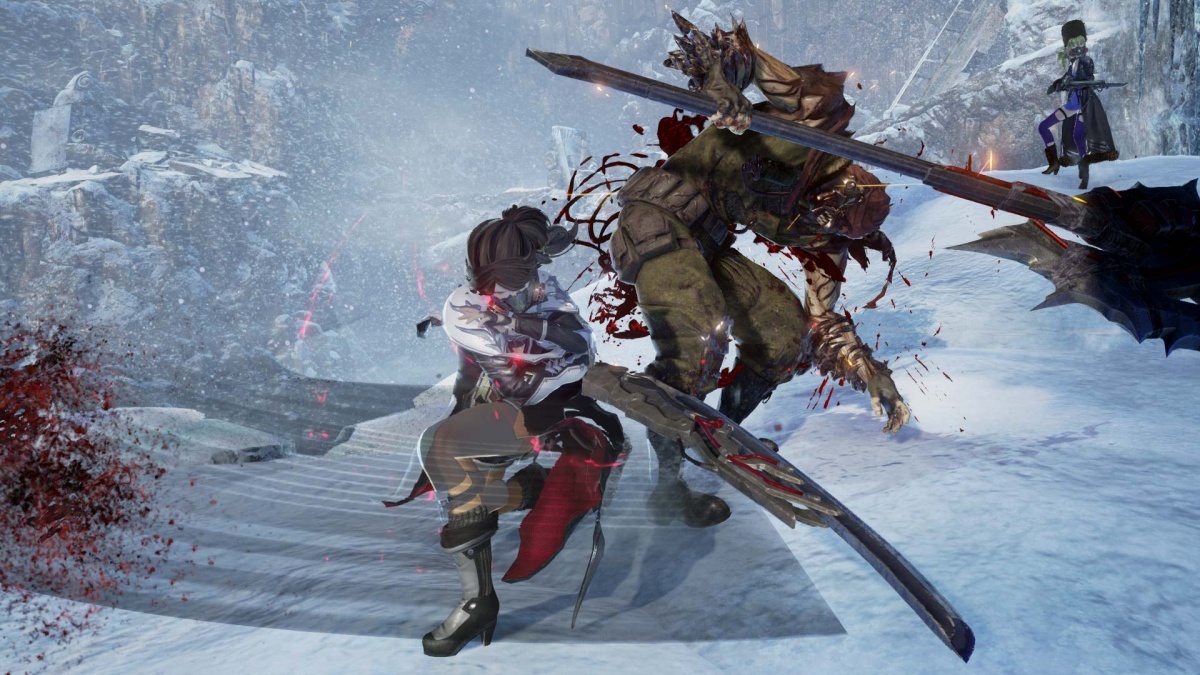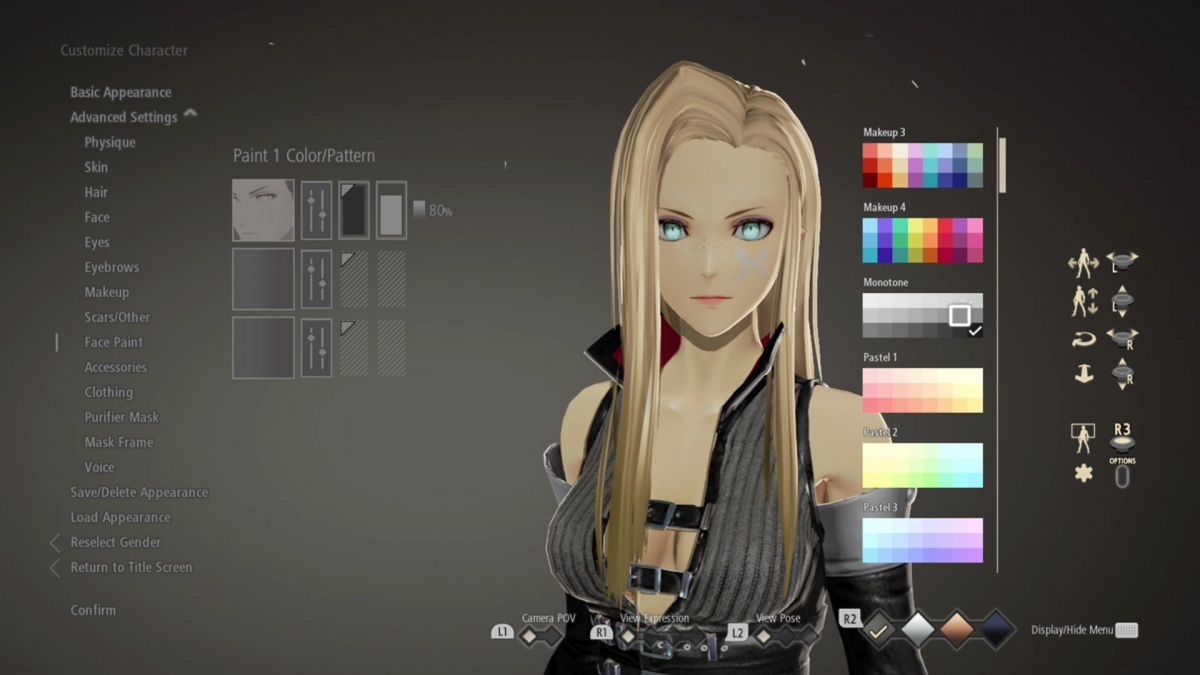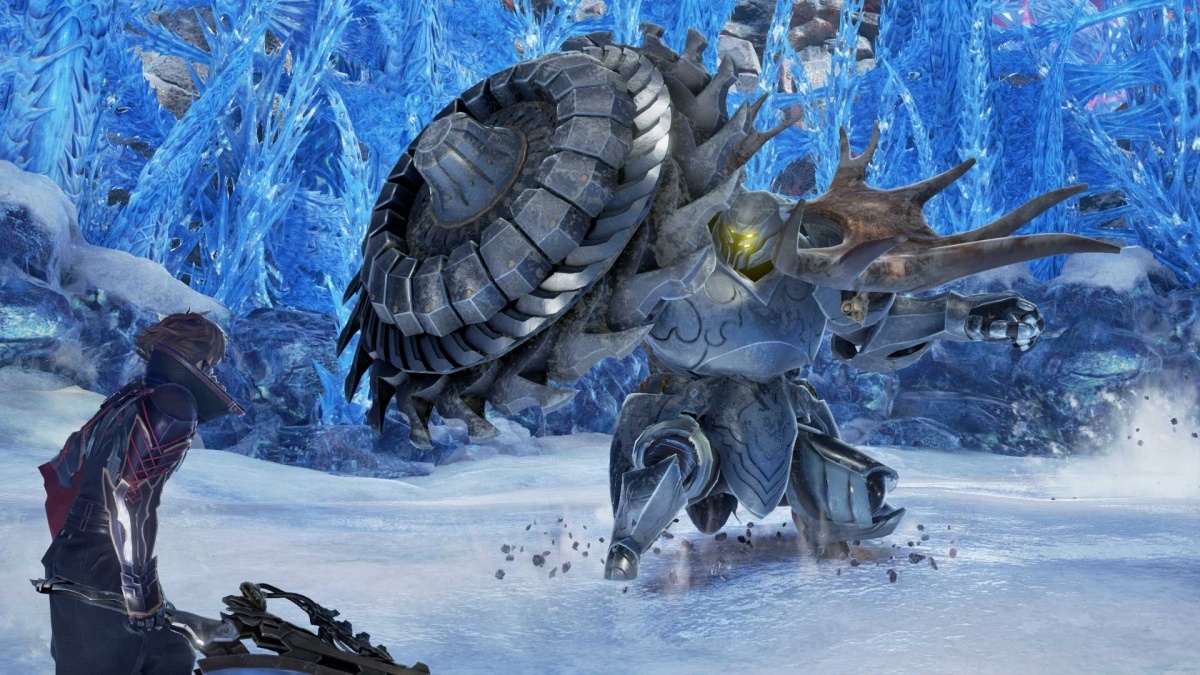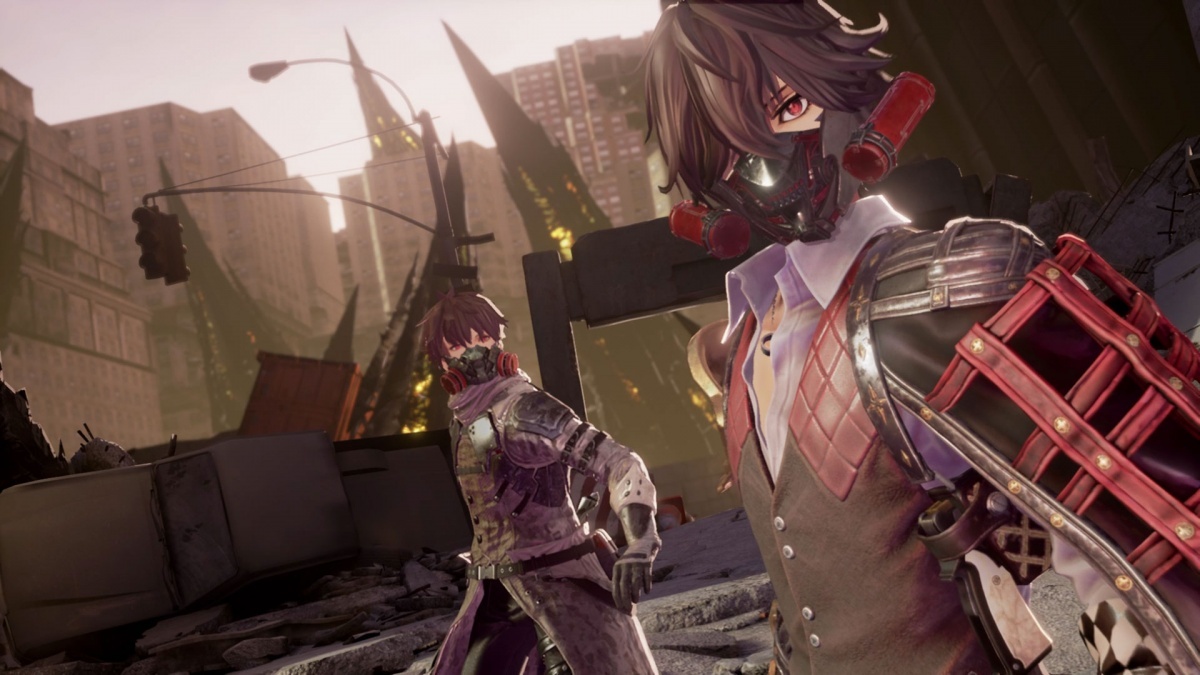Code Vein (PlayStation 4) Review
By Drew Hurley  20.10.2019
20.10.2019

When a game gets so big, so beloved, developers and publishers take note and all of a sudden eerily similar games begin to appear around the gaming world. Blocky crafting games, battle royale, MOBAs, team-based FPS, and, of course, Souls-likes. Granted, there aren't as many, but there are a few developers out there trying to capture the same lightning-in-a-bottle that FromSoftware managed to craft. Some, like Sekiro, have arguably done it better. Bandai Namco is putting an anime spin on the proceedings, giving a post-apocalyptic, Vampire world, with the same punishing gameplay - but, will this be another Lords of the Fallen, or the next Bloodborne?
Anime has done well for Bandai Namco for a long time. Much of the best anime tie-in games have come from the studio and they have clearly gone all-in with the aesthetic. Not only with the visual design, but the story too. The story at hand is a huge, wide, and deeply detailed tale with an expansive world and lore behind it. Set in a post-apocalyptic wasteland, Vampires known as Revenants use Human Blood to stop from turning into the Lost. There are also strange trees that grow a bizarre, fruit which are the equivalent of human blood, but these are out in the wasteland of the world; a world covered in miasma which can also turn the Revenants into Lost.
Playing as an amnesiac Revenant, the tale initially starts out just searching out trees that clear the miasma, and produce this bloody fruit but it soon turns into a grand world-saving battle - grand in scale, but not in quality, though, as this is filled with tropes and hugely telegraphed twists. It's familiar of many overwritten, attempted high-brow anime tales. The best that can be said of it is that it's serviceable. While the Souls series relied on the world itself to convey its narrative, Code Vein hammers the player over the head with terminology and constant exposition.
The adventure opens on an expansive character creation system - which is wonderful, more on that later - then a simple tutorial area introduces the expansive fundamentals of the game. The very basics of this are just how to attack, how to dodge, block, and counter. More importantly, though, are the explanations of the 'Codes,' and the 'Gifts' systems. Much like with the story itself, this hammers the mechanics home, overloading them early, and making the tutorial feel horribly dated. It doesn't help that this has some familiar elements, and age-old RPG mainstays, but they all have their own names here.

A Code is like a class in any other similar title. To start, there's Fighter, Ranger, and Caster. They're pretty self-explanatory; FIghter dedicated to getting up close with melee weapons, Ranger for - surprisingly! - long-ranged damage, and a Caster for the mage types. These basic archetype Codes are just the entry to the system. There are a whopping thirty-four Codes to collect over the course of the game, each much more diverse and original than the cookie cutters above. The Atlas Code is the perfect tanking build, able to utilise heavy armour, and with abilities dedicated to survivability and reducing damage received. The Scout class is one of the best for fast-attacking builds, but not using its abilities, just because of its base stats and weapon competencies. Abilities from other classes are best used to support the Scout.
This method of transferring abilities is a huge part of the experience. These skills are entitled 'Gifts,' and there are unique Gifts for each Code. Coming as either passive or active abilities, these Gifts are only usable while set to that Code - at least, at first. Over time, these Gifts can be mastered and carried over to be equipped while in other Codes. There are some Gifts exclusively available to their own Code, but many are transferable. Gifts are key to mastering the game, regularly switching between the Codes, unlocking the Gifts within each, and using them to complement builds.
It's a strange design decision compared to many of the other types of this sub-genre where the focus is on picking a class and mastering it, with other classes saved for different play-throughs. Here, Gifts should be switched often, in order to utilise the strengths of each to exploit the weaknesses of foes - but also, to unlock different Gifts while levelling and widening the amount of customisation for each Code by supplementing them with the Gifts of others.

This is essential to give the best chance at overcoming some of the very challenging boss encounters. For example, the 'Invading Executioner' boss moves very fast and inflicts a slowing debuff, making his speedy attacks even more difficult to avoid. Spending some time to level up and master the anti-slow passive ability within the Mercury code really helps. Others aren't quite so situationally specific, but depending on the area and your personal playstyle, they can be a great help. Those finding this to be challenging can develop the Astrea Code early to unlock the 'Torchbearer' ability; a great "Hail Mary" skill that restores the stock of self-heal regeneration abilities when the partner NPC dies, giving more survivability.
This leads nicely into possibly the most important part of this. The combat. At its core, it's a Souls-like, and as such the combat will be familiar to anyone who has played one. Enemies telegraph attacks, and have set attack patterns to learn, and it's down to the player to decide where to focus on how to combat them. There's the standard "Tank and Spank" style play, blocking and exchanging blows; the dodge and strike; the long-range poke and run. All are viable ways to play, but they also depend on other key parts of the mechanics that help to set this apart from its contemporaries.
First off is how combat is controlled. There's a stamina bar which is used up for every battle action. Attacking, blocking, evading, using items - all these take stamina. The bar slowly recovers when not performing actions, but time something wrong, and the stamina isn't there to block a blow or roll beneath a bone-shattering smash, thus it's game over. That's not the only limited resource in the combat either. The Gifts mentioned earlier run off a resource called - yes, another term - 'Ichor.' It's basically the magic, mana, or mp of Code Vein, and it's used up in firing off abilities. There's a nice extra feature to this in that the pool can grow over its maximum by performing special actions. A backstab, a parry, a charge attack and more can set the max amount of the pool higher and higher, with it only resetting upon death or resting. It adds another layer to the gameplay where it's worth farming the respawning enemies to build up the Ichor pool before heading into bosses. Though, that has its own challenges, as there's a default heal ability with limited uses which is only replenished upon resting.

Resting is done at a "Mistel;" a glowing plant that acts like a save point. Much like its inspiration, a death causes the stockpiled experience - entitled Haze here - to drop where the player died. This can be recovered if reached once again, but lost should they die once more along the way. A reused mechanic, but one that works well. Adding a layer of frantic focus trying to just recover the spoils before they're permanently lost. This Haze is used to level up and to purchase different Gifts once the relevant unlock criteria for them has been completed. This mostly includes tracking down memories and expanding the team of Revenants back at home base.
While the gaming is considerably less challenging than its progenitor, the enemies are still able to wipe the floor with the character in very short order. There is one major problem with the combat, however. The challenge is part of the draw of the game, and that's where this has a big issue: it can be made too easy with literal effort. A core part of it all is taking an NPC as a partner on missions and these partners can do some incredible damage. For the first three quarters or so of the game it's possible to stand back and dodge or block attacks, tanking the damage and keeping the attention of enemies while the partner chips away at them. They even heal the player with their own health, making every element easier. For the true, challenging experience the partners can be left back at home base before embarking into the world.
Presentation wide, as mentioned, the anime style is heavy here, which will be a selling point for some, and a put-off for others. For those that enjoy the style used on the characters, the character creator has a huge amount of customisable options that will have players burning hours playing around to make the perfect avatar, or as has become very popular of late, recreating characters from their favourite anime. The style of Code Vein fits well with the anime aesthetic, and it's easy to recreate characters from things like RWBY, the Phantom Thieves, Hatsune Miku, and just about every shonen series cast out there.

Cubed3 Rating
Very Good - Bronze Award

Code Vein is going to be divisive. Out of the box, it's not a very good game. The balance in difficulty is a mess, with certain classes and abilities feeling hugely overpowered; the partners making even the most challenging encounter easy, until the difficulty spikes massively towards the conclusion. It's in that conclusion that Code Vein shines at its best. For the players willing to invest the time to get there, and good enough to learn how to master the considerably complex system, there is a superb experience waiting. It's just a shame it takes so long to get there.

![]() 7/10
7/10
![]() 0
(0 Votes)
0
(0 Votes)
 Out now
Out now  Out now
Out now  Out now
Out now  Out now
Out now Comments
Comments are currently disabled

 Sign In
Sign In Game Details
Game Details Subscribe to this topic
Subscribe to this topic Features
Features





 Top
Top

